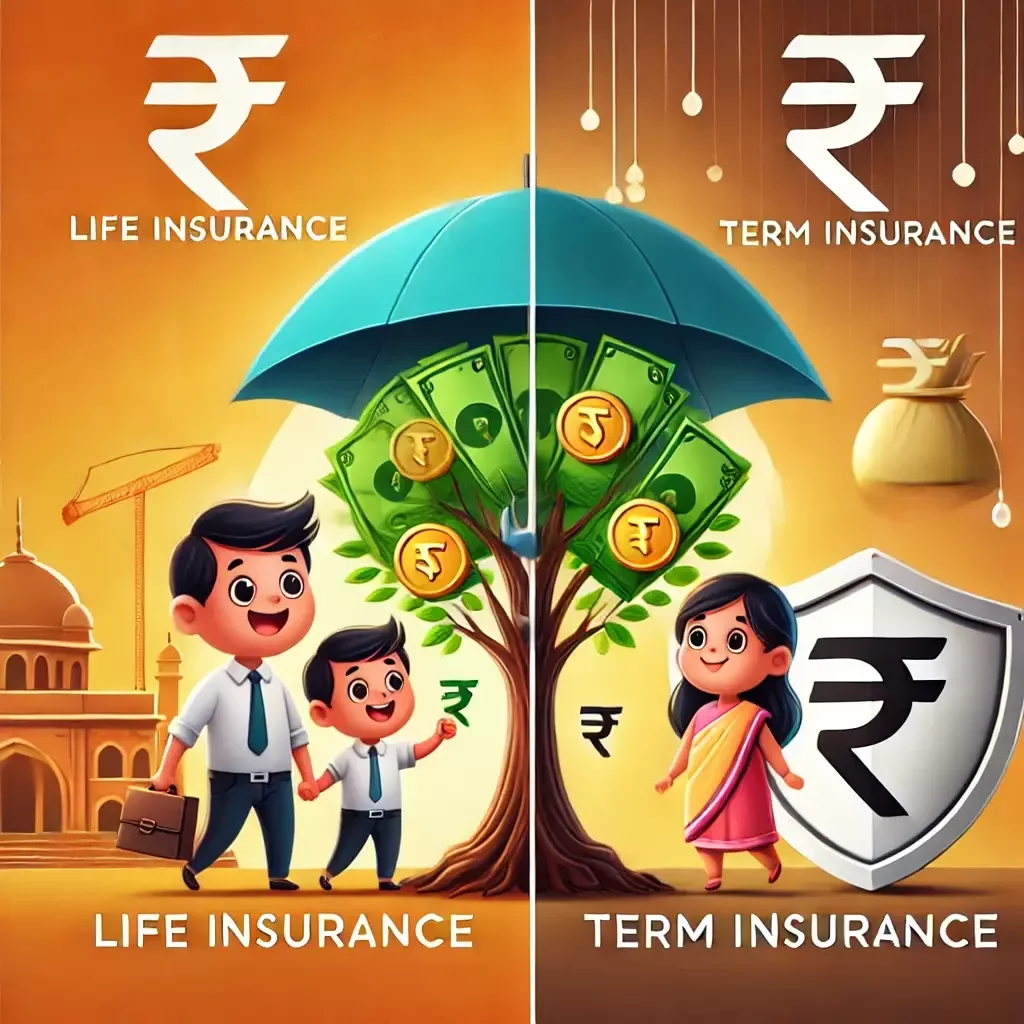Life insurance provides lifelong coverage with savings, while term insurance offers pure risk coverage for a fixed period without maturity benefits.

Life Insurance vs. Term Insurance: Key Differences
Life insurance and term insurance are both financial tools designed to provide financial security to the policyholder’s family in case of their demise. However, they differ significantly in terms of coverage, benefits, and cost.
Term Insurance
Term insurance is a pure protection plan that offers coverage for a specific period (term), such as 10, 20, or 30 years. If the policyholder passes away within the term, the nominee receives a death benefit. However, if the policyholder survives the term, there is no maturity benefit. Term plans are highly affordable, making them an excellent choice for those seeking high coverage at a low premium.
Key Features of Term Insurance:
- Provides a death benefit only
- No maturity or survival benefits
- Lower premium cost compared to life insurance
- Ideal for income replacement and financial security
Life Insurance
Life insurance includes both a death benefit and a savings or investment component. It provides coverage for the policyholder’s entire life (whole life insurance) or for a long duration with maturity benefits (endowment or money-back plans). Premiums are higher since these plans build cash value over time, which can be withdrawn or borrowed against.
Key Features of Life Insurance:
- Provides both death and maturity benefits
- Acts as a savings or investment tool
- Higher premiums compared to term insurance
- Suitable for wealth accumulation and financial planning
Which One to Choose?
If you want pure financial protection for your family, term insurance is the best option due to its affordability and high coverage. If you seek both protection and investment, life insurance can help build wealth over time. The choice depends on your financial goals, risk appetite, and long-term plans.

